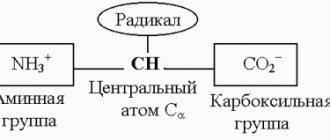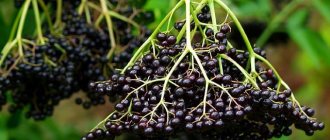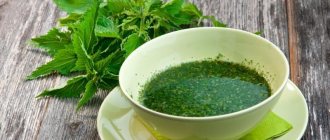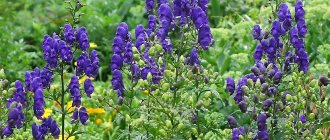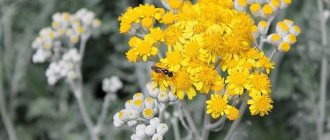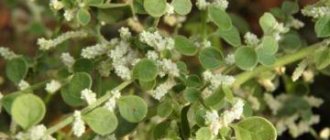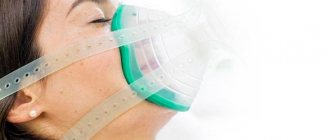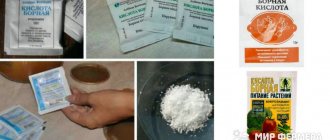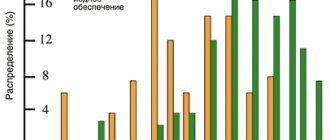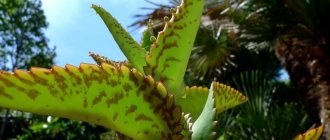Author: Elena N. https://floristics.info/ru/index.php?option=com_contact&view=contact&id=19 Category: Garden plants Published: November 01, 2018Last edits: November 04, 2020
- Eleutherococcus sessiliflorus
- Medicinal properties
Eleutherococcus (lat. Eleutherococcus) is a genus of thorny trees and shrubs of the Araliaceae family, which includes about 30 species growing in the territory from southeastern Siberia to Japan, and further south to the Philippine Islands. The greatest diversity of species is observed in the central and western regions of China. The most popular medicinal and ornamental garden shrub is Eleutherococcus senticosus.
The history of the use of Eleutherococcus senticosus is interesting.
In Eastern countries - China, Korea, Japan - it has a centuries-old tradition.
Ancient Chinese healers knew about the invigorating and general strengthening effect of this plant, treated kidneys, spleen, and nervous diseases with its help, and recommended taking it when tired, to improve overall health and longevity. Russian and Western doctors paid attention to it only in the second half of the last century. By the mid-twentieth century, Soviet scientists were intensively searching for natural substitutes for ginseng, which had widespread clinical use. The fact is that the limited resources of effective and popular ginseng in our country were threatened with complete disappearance, since it is being restored very slowly. And such an analogue turned out to be its close relative, called Siberian ginseng - Eleutherococcus senticosus (both belong to the Araliaceae family). They are united by the presence of unique chemical compounds - triterpene glycosides, responsible for their tonic and stimulating effect. Ginseng and Eleutherococcus have taken leading positions in the group of adaptogens - this is what scientists call a number of plants that can increase the body’s resistance to negative factors of various origins, both natural and social. For more than half a century, intensive research into the properties of the so-called Siberian ginseng has not stopped, and new amazing healing properties of this wonderful herbal medicine are being revealed.
Recipes
Tincture of Eleutherococcus senticosus.
We take fifty grams of dry raw material, pour it into a half-liter glass jar or transparent glass bottle, fill it with forty percent alcohol (two glasses) or vodka. We seal the bottle or jar well with a lid and leave it to infuse at room temperature for three weeks in a dark place. It is necessary to shake the mixture periodically. Then we filter and put the tincture in the refrigerator for storage. You need to take thirty drops diluted in a quarter glass of clean water, twice a day, half an hour before meals. The course of treatment with Eleutherococcus tincture should be from fifteen to thirty days.
Liquid extract of Eleutherococcus senticosus.
The roots of the plant are infused with alcohol or vodka in a one to one ratio. Take the extract, thirty drops diluted in a quarter glass of water, half an hour before meals, twice a day.
Dry extract of Eleutherococcus senticosus.
This product is produced in industrial pharmacology, in the form of tablets, each of which contains one tenth of a gram of dry Eleutherococcus root. The drug is taken twice a day (before lunch), one or two tablets (depending on age and purpose of taking the medication). A course of treatment with dry extract of Eleutherococcus tablets.
Chemical composition of Eleutherococcus senticosus and its pharmacological properties
The main active ingredients of the Eleutherococcus adaptogen, which determine its pharmacological specificity, are glycosides, in particular 7 types of eleutherosides unique to this plant, not all of which have been sufficiently studied. It is these compounds that are responsible for increasing the body’s nonspecific resistance to pathogenic external influences, strengthening the immune system. They activate the central nervous system, enhance physical and mental performance at the metabolic level, lower cholesterol levels, and reduce the harmful effects of toxins.
Eleutherococcus is rich in:
- flavonoids - natural dyes, expressed food antioxidants, which also have an antibacterial effect;
- essential oils – volatile substances that activate metabolism and protect against harmful microorganisms;
- organic acids that normalize digestion, preventing the proliferation of pathogenic bacteria and fermentation processes in the intestines;
- vitamins, especially C (ascorbic acid, the most important for humans) and group B. Thiamine (B1) and riboflavin (B2) are effective for nervous diseases, paralysis and convulsive manifestations, for preserving and restoring vision, as well as for the fetus during pregnancy;
- coumarins - compounds with a specific hay odor. They have antispasmodic, antitumor, anticoagulant effects (reduce blood clotting and prevent the formation of blood clots).
Manchurian aralia also contains the alkaloid aralin, carbohydrates, mineral salts, pectin, quercetin, micro- and macroelements, gum, starch, quercetin and rutin.
Use of Eleutherococcus for health and preventive purposes
A natural adaptogen and biostimulant, an immunomodulator and a natural energizer, in terms of the breadth of its range of applications, it can easily be classified as a universal drug, but its effect is milder compared to its closest relative - ginseng. The use of Eleutherococcus today is recommended by official medicine for health and preventive purposes, as an independent remedy and in complex therapy. It is brewed as tea, used as a seasoning, and alcohol and water extracts, syrups, tablets, and creams are made from it.
Botanical description
Eleutherococcus senticosus, or devil's bush, or wild pepper, or spiny berry, is a deciduous plant with light gray bark and a highly branched rhizome, located in the upper layer of soil and overgrown with many adventitious roots, the length of which can reach 30 m. This shrub is about 30 m in height. with numerous stems it can reach from 2 to 5 m. Its straight shoots are densely planted with thin, downward-pointing spines.
The palmate-compound leaves of Eleutherococcus senticosus are located on long petioles and consist of five pointed, oval, glabrous or slightly bristly on top and covered along the veins with red hair on the underside of leaves with sharply double-toothed edges. Simple umbrellas of small fragrant flowers located on long stalks are formed at the ends of the shoots: staminate flowers are pale purple in color, and pistillate flowers are yellowish.
Schisandra chinensis - benefits and harm, cultivation
The inedible fruits of Eleutherococcus senticosus are shiny, spherical, black drupes up to 1 cm in diameter, in which five yellowish crescent-shaped seeds ripen. The fruits ripen in early to mid-autumn and do not fall for a long time. In nature, Eleutherococcus senticosus forms the undergrowth in cedar-broad-leaved forests; it is also found in floodplain spruce forests. The plant was introduced into cultivation in 1862.
- Heather: cultivation, planting and care, types and varieties
In what cases should you turn to this phenomenal herbal medicine?
- The activating effect of eleutherococcus on the central nervous system and human psyche makes it an effective remedy against chronic fatigue, hypochondria, depression, and nervous disorders caused by exhaustion and overwork. In general, it has an exciting and stimulating effect on the psyche. Helps withstand stress.
- Eleutherococcus has a hypoglycemic effect, that is, it helps lower blood sugar levels, therefore it is successfully used in the treatment of diabetes mellitus, especially in the initial stages of the disease.
- Laboratory studies and clinical experience have confirmed that Aralia Manchurian activates the brain: the processes of memory, attention, perception (visual and auditory) and learning. By acting at the level of conditioned reflexes, it allows you to more accurately perform assigned tasks. Moreover, this phytoadaptogen has neuroprotective properties, that is, it protects brain neurons from death and even promotes their recovery.
- Prevention of cardiac diseases with the help of Eleutherococcus is possible due to its antiarrhythmic and stimulating effects, however, serious cardiac pathologies are a contraindication to the use of this potent biologically active plant. It is recommended for atherosclerosis, as it lowers cholesterol levels, normalizing lipid metabolism.
- Siberian ginseng helps restore sexual function in both sexes. It is recommended for men for impotence, for women for menstrual irregularities, and for both to activate libido.
- In case of frequent and acute colds and a weakened state of health, it is used to “stimulate” the immune system, as well as after serious illnesses and operations - for a speedy recovery.
- It is also used to treat the skin and hair of the scalp, skin diseases, including psoriasis. For wounds and burns, it has a mild analgesic, anti-inflammatory and regenerative effect. In cosmetology it is used to normalize the fat balance of the skin and to remove acne.
- The antitumor effect of Manchurian aralia is associated with its ability to normalize metabolic processes and neutralize toxins, harmful agents, and the effects of radiation.
- In the treatment of various eye diseases, this plant is included in complex therapy as a means of increasing visual acuity.
Eleutherococcus in elite sports
Eleutherococcus is widely used in elite , since its activating effect on motor and mental activity, muscle performance, metabolism and recovery abilities of athletes makes it an extremely promising stimulant drug. Helping to achieve high results in training and competitive activities, unlike many synthetic products, it does not have a detrimental effect on health. Therefore, coaches and sports doctors often recommend eleutherococcus to their clients as a source of biologically active substances necessary to stay in good physical shape.
Contraindications to the use of Eleutherococcus
Any potent medicinal plant requires a competent approach to the treatment and prevention of diseases. In no case should you exceed the doses indicated in the instructions for herbal medicines or change the dosage regimen without permission. It is not recommended to use Eleutherococcus in case of serious heart pathologies, high blood pressure, advanced diabetes mellitus, acute inflammatory processes accompanied by high temperature, as well as immediately before bedtime, which can lead to overexcitation and insomnia.
Potential Side Effects
Is Eleutherococcus senticosus safe?
When taken orally for a short period of time, it is generally safe for adults. This supplement is not recommended for children.
What are the side effects of Eleutherococcus senticosus?
Rare side effects of Siberian ginseng include drowsiness, changes in heart rate, sadness, anxiety, and muscle spasms. It may cause mild diarrhea in some. At high doses, Siberian ginseng can lead to increased blood pressure. ()
Be sure to consult with a qualified healthcare professional before taking Eleutherococcus senticosus, especially if you are pregnant or breastfeeding.
Also be sure to consult your doctor if you are already taking medications or have any medical condition, especially if it is a bleeding disorder, diabetes, heart disease, high blood pressure (supplements may make your condition worse), mental disorders such as mania or schizophrenia, or hormone-sensitive diseases such as breast cancer, uterine cancer, ovarian cancer, endometriosis, or uterine fibroids (Siberian ginseng may act as an estrogen).
Eleutherococcus senticosus is known to interact moderately with lithium salts, digoxin (Lanoxin), sedative drugs (CNS depressants), anticoagulants, antiplatelet drugs and antidiabetic agents.
Liver-altering drugs may also interact with Siberian ginseng, including lovastatin (Mevacor), ketoconazole (Nizoral), itraconazole (Sporanox), fexofenadine (Allegra), triazolam (Halcion), and many others.
Avoid drinking alcohol in combination with Siberian ginseng as it may increase drowsiness.
